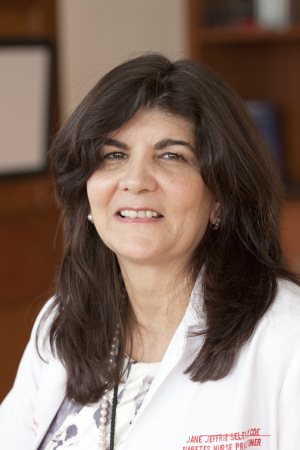
https://sgorelick.files.wordpress.com/2014/12/measles.jpg
This guest post is by Steven M. Gorelick, PhD, Distinguished Lecturer in the Department of Film and Media Studies at Hunter College, City University of New York.
Epidemiologists have long known that international airports are especially problematic spaces when it comes to transmission of infectious diseases. What we often forget, though, in the midst of CNN’s seemingly scheduled weekly public panic, is that in the case of the most common communicable diseases, vaccinated people virtually never contract any of the viruses for which effective vaccines have long been available, regardless of whether they are exposed in airports, stadiums, classrooms, or public restrooms.
But what about the social and public health impact of those who choose not to be vaccinated?
That is the question that leads me to strongly recommend this short, riveting account of what happened in March, 2014 — at an unnamed US international airport — when four unvaccinated men were exposed to what turned out to be the B3 measles strain, the predominant strain circulating in the Philippines and in the United States in early 2014. The article appears in the December 19, 2013, edition of Mortality and Morbidity, a weekly compendium of the best work in applied epidemiology published by the Center for Disease Control, and is included in the journal’s short section “Field Notes.”
At first glance, the short article presents as an elegant and informed piece of detective work by epidemiologists and infectious disease specialists, a few paragraphs that took months of work. Read it and see how much inspired thought and investigation went into figuring out how four men who found themselves in the same airport earlier this year ended up contracting a specific variety of a disease that is rarely seen these days in the United States.
But there is something more ominous in this case study. It also reads as a powerful cautionary tale of the perils that very well might be revived in a world in which we allow decades of work by immunologists and other scientists — work that rendered many diseases such as mumps, measles, rubella, whooping cough, polio and others virtually invisible — to be swept aside by the wave of anti-vaccination and anti-evidence lunacy peddled by respected scientific and medical luminaries like Jenny McCarthy and Michele Bachmann.
It is important to note that vaccination rates are — for reasons including poverty and inadequate public health infrastructure– lower in developing countries. The extraordinary leaps here in the United States must not be allowed to obscure the very different and disturbing story in other parts of the world. Much effort is being made to remedy this inexcusable discrepancy. More, though, needs to be done. We may be polio free, but many parts of the world are not.
But guess what? The epicenter of the new vaccine denial isn’t in the developing world. It’s right here in the United States. And I don’t think it’s simply a coincidence that many in this new generation of denialists — relatively young, evidence-hostile, self-anointed, “immunologists in their own mind” — weren’t around to watch the legs of a kid across the street start to wither overnight from the scourge that was polio; never knew that mumps, on rare occasions, could cause hearing loss and, on less rare occasions, cause miscarriages in pregnant women; weren’t watching in the 1950s when an annual average of greater than 500,000 cases and nearly 500 deaths from measles (mostly young children) were reported in the United States.
You will hear some hyperventilating vaccine denialists claim that mainstream science simply dismisses all their concerns, but this straw man grievance doesn’t hold. Any serious immunologist will be the first to tell you that each vaccine does indeed have some very serious possible side effects. But they will quickly add something the denialists seem not to hear, that the incidence of such side effects is negligible and substantially outweighed by the debilitating and infinitely more widespread effects of the illness itself.
And while the problem of vaccine manufacturing quality control — another denialist trope — has been successfully and aggressively dealt with, an early and all-too-real 1950s nightmare known as “The Cutter-Incident”, resulting from one lab’s fatally botched manufacture of a shipment of Salk’s inactivated poliovirus vaccine, continues to haunt the world view of many opponents of vaccine. Denialists seem unaware or uninterested in the even more rigorous and highly regulated manufacturing process that is closely monitored on a batch by batch basis.
Didn’t the denialists notice that the serious scientific community did not completely and categorically dismiss each and every concern they raised in the early days of the controversy. Points raised about the effects of thimerosal, a mercury-containing preservative that was at one time used in vaccine production, were examined in several large-scale studies that ultimately could not confirm harmful effects. Yet even with this finding, public concern led the CDC and the American Academy of Pediatrics to request that thiomersal no longer be used in manufacture. No serious scientist advocating vaccination will ever say that research has somehow removed all the risk from the process of manufacturing antigen-based vaccines.
People who think that scientists based primarily in research institutes and universities are instinctively dismissive of controversial claims have not watched scientists work. Those doing gold standard research will drive you crazy with all their non-stop talk about the galling complexity, nuance, and uncertainty of multi-variate research questions and how, while they might be viscerally skeptical about a given claim, they are loathe to completely dismiss any possibility until they can do so with very solid statistical confidence.
Many people would, I think, be surprised at the extent to which the formal scientific research system of journals and peer review constantly — and yes, sometimes to the annoyance and frustration of the scientists — initially rejects numerous papers submitted to prestige journals because the authors have not convincingly disproven alternate hypotheses for the causal link they are touting. I wish I could get serious airline miles for each letter received by researchers in just this calendar year that included something like the following hypothetical and fictional language:
“The evidence you cite for a direct causal link between the controlled use by adolescents between the age of 12 – 17 of sub-cutaneously injected monoredepharbodopitoritol and subsequent substantial reduction in acne symptoms is intriguing, certainly leaning strongly in the direction of a possible causal link that appears unlikely to occur by chance. Here, though, is the problem. A number of other explanations exist in the literature for how and why even severe cases of acne will spontaneously improve between the ages of 17 – 19.
These include the hypothesized effect of grape juice consumption, a sudden change in home location that may eliminate hypothesized environmental and climatological causes of acne such as cold and rainy weather, and changes in niacin consumption that are hypothesized to ameliorate severe acne symptoms in subjects of Mediterranean and Sub-Saharan Africa descent. We would like you to resubmit the article after you have more persuasively and confidently rejected these alternate explanations with a reasonable degree of statistical confidence.”
Will somebody please tell me I am slipping into hopeless catastrophic thinking and pull me back. Now.
I need some optimism here.
Tell me I’m wrong and that science and inference and probability are more widely understood than I think. Tell me that the withdrawn and discredited “evidence” reported by Andrew Wakefield, whose medical license was revoked for fraud, is not still being cited on the talk show circuit as evidence. Tell me that serious, caring parents are not learning the basics of immunology from a second-rate actor on a third-rate talk show. Tell me that no one, not one single person, who finds themselves struggling with a child’s mental illness has even listened to any of Tom Cruise’s brilliant and erudite lectures on the biological and neurological action of serotonin uptake inhibitors.
And most of all, can someone — anyone — gently assure me that we will not be so fully engaged in the fight against all sorts of global, 21st century geo-political threats that we let a bunch of old legacy diseases, long consigned to the dustbin of public health, sneak back in through a side entrance simply because we ignored the growing influence of anti-vaccine crusaders who couldn’t explain the difference between a virus and bacteria if it bit them in the keister.
[embed]https://sgorelick.files.wordpress.com/2014/12/measles.jpg[/embed]
This guest post is by Steven M.





